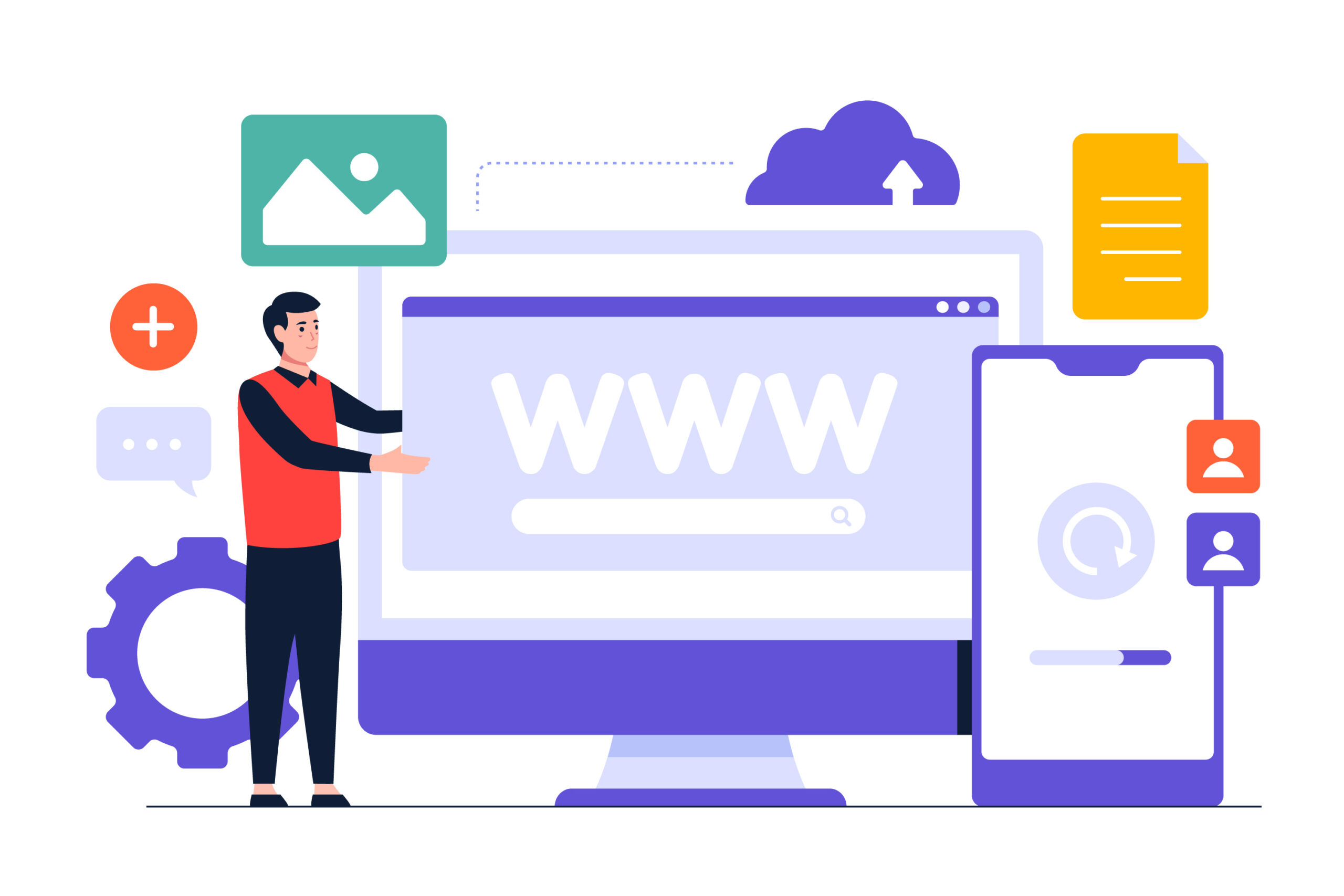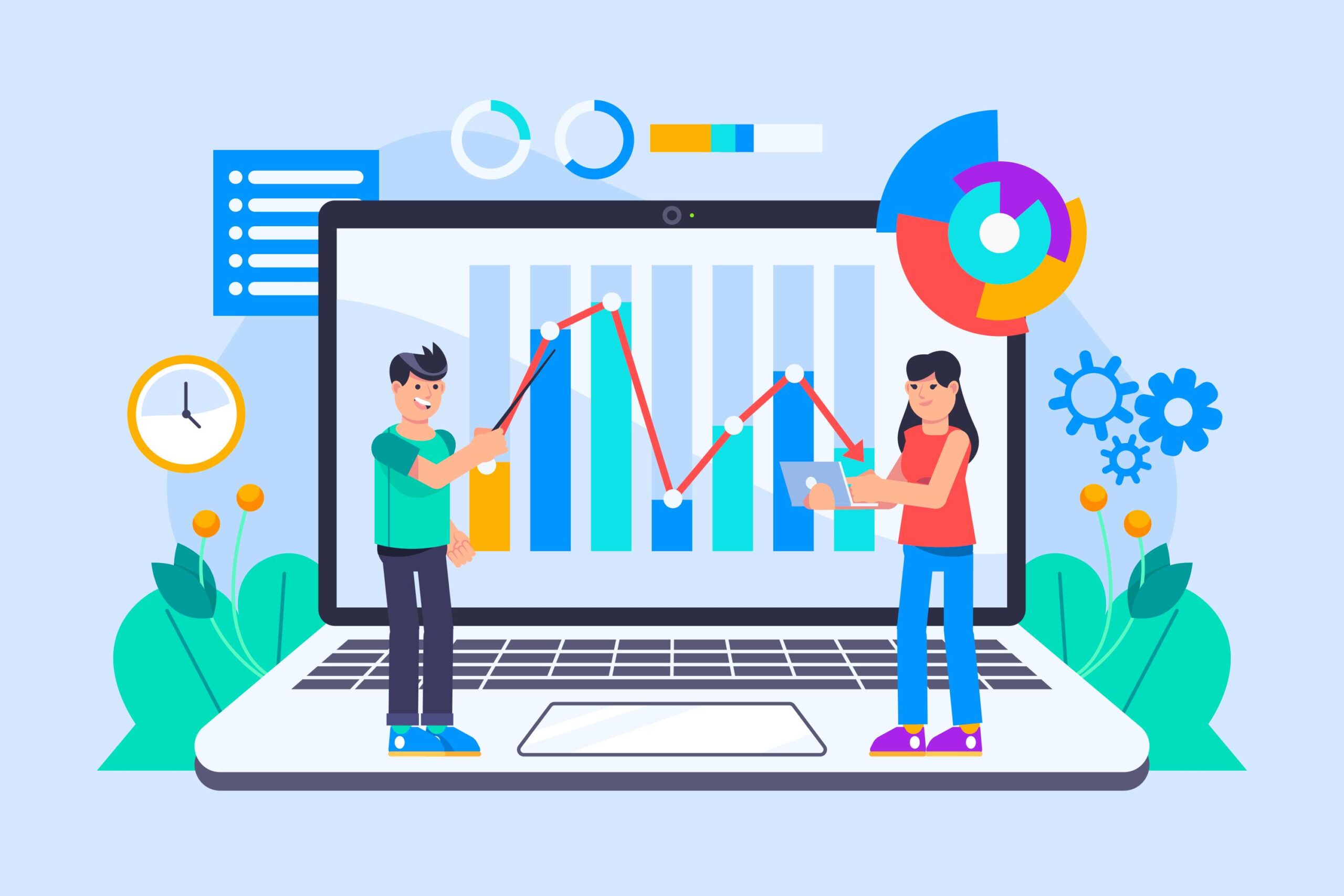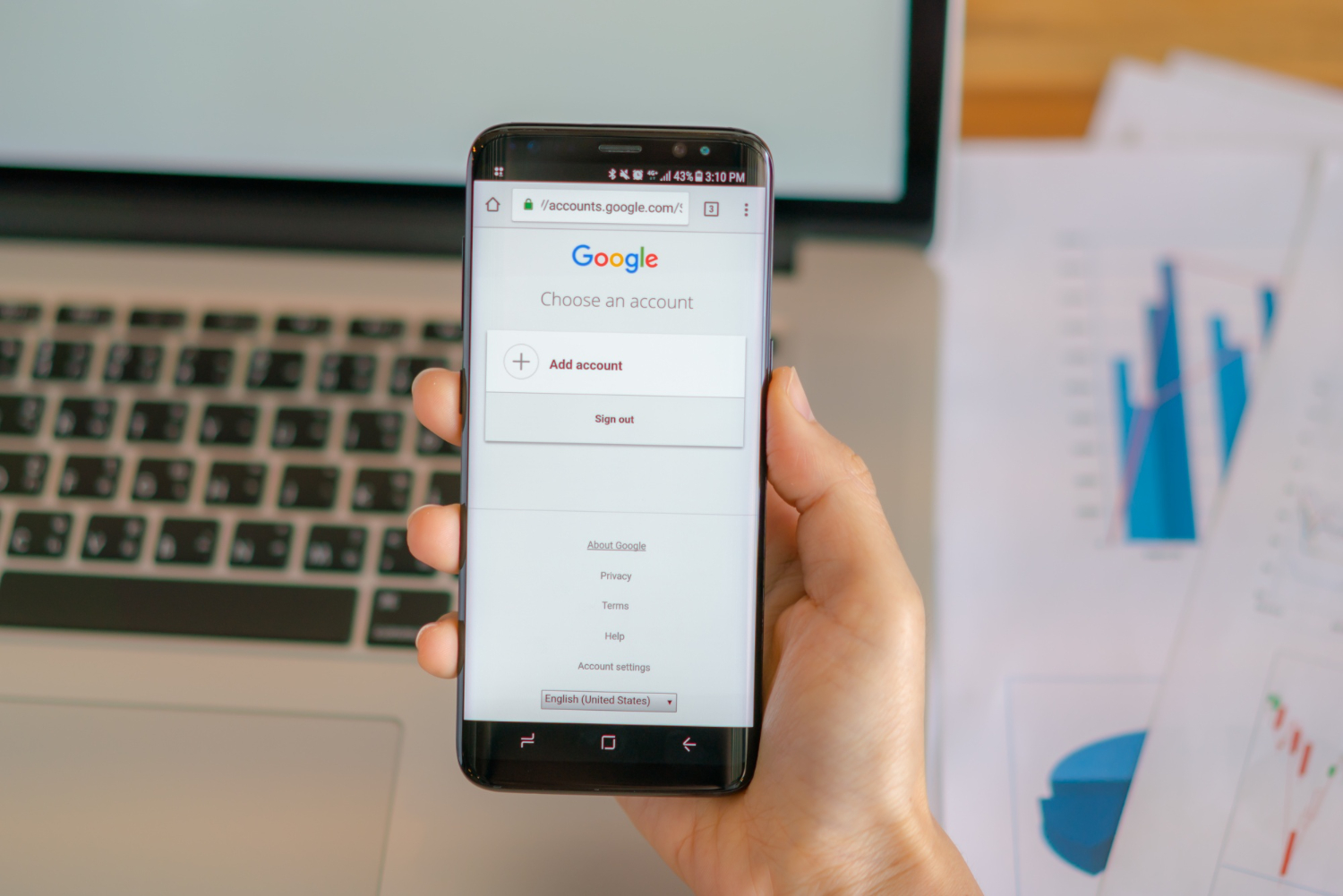Is email marketing dead? Far from it.
In reality, email has continually evolved and remains one of the most effective digital marketing channels. Over 361 billion emails are sent daily, with that number projected to reach 408 billion by 2027. Marketers also still enjoy incredible returns from email – it delivers an ROI of up to $42 for every $1 spent, outperforming most other channels.
The key to email’s enduring success is how it has adapted through personalization. Rather than blasting generic messages, modern email campaigns tailor content to the individual. Studies show that personalized emails deliver six times higher transaction rates than non-personalized emails. In other words, making emails more personal and relevant isn’t just a nice-to-have – it’s a game-changer for engagement and sales.
It’s time to debunk the “email is dead” myth. Email is very much alive, continually proving itself as the “single most consistent and reliable marketing channel on the web”. The difference today is that inboxes are smarter and more crowded, so only the most relevant messages stand out.
That’s where hyper-personalization comes in.
What is Email Personalization?
Email personalization is a data-driven marketing strategy that involves tailoring email content to each individual recipient.
In practical terms, it means using what you know about a subscriber – their name, demographics, past purchases, browsing behavior, preferences, etc. – to make the email more relevant to them.
Instead of a one-size-fits-all newsletter, a personalized email feels like a custom message designed for that specific person. The email personalization archive this through these components:
Segmentation
This is the foundation of personalization. Email segmentation divides your master email list into smaller groups (segments) based on specific criteria or characteristics. For example, you might segment subscribers by geographic region, industry, gender, purchase history, or engagement level.
The goal is to create more targeted campaigns by sending highly relevant messages to each subgroup. Rather than blasting one generic email to everyone, segmentation lets you customize content for the interests of each segment, which greatly improves open and click rates.
Dynamic Content
Dynamic email content means parts of the email (text or images) will change for each recipient based on their data.
Essentially, you design one email template that can display different content blocks depending on who’s reading it. For instance, a travel site’s email might automatically show deals from the subscriber’s nearest airport.
Dynamic content allows you to change what each recipient sees when they open the email, according to rules you define from your data. This could be as simple as inserting the person’s name, or as advanced as showing product recommendations based on their browsing history.
Dynamic content ensures each subscriber sees the most relevant information for them, even though the sender only crafted one email template.
Automation and Triggers
Personalization isn’t only what you say in an email – it’s also when you say it.
Email automation allows you to set up emails that send automatically based on specific actions, events, or time triggers. For example, you can have a welcome email fire immediately when someone signs up, a birthday greeting email on their special day, or an abandoned cart email if a shopper leaves items in their online cart without purchasing. These triggered emails use personalization by responding directly to a subscriber’s behavior or status in real time.
Automation streamlines your campaigns and ensures timely, relevant outreach at scale – all without manual effort for each message.
AI-Driven Recommendations
The latest frontier of personalization uses artificial intelligence and predictive analytics to customize emails.
AI can analyze vast amounts of customer data to predict what each person might be interested in next. This powers features like product or content recommendations (“You might like this…”) based on someone’s past behavior and what similar users enjoyed. AI can also personalize send times (determining the optimal time to email each user) and even craft subject lines or copy variations that are likely to resonate. In fact, 58% of marketers say that machine learning is effective at driving email personalization efforts.
AI-driven personalization takes things beyond simple rules – it continuously learns and adapts to the individual, enabling a truly one-to-one communication at scale.
In short, email personalization is all about making your emails feel hand-crafted for each recipient. This is achieved by grouping your audience intelligently, using dynamic content insertion, automating emails triggered by user actions, and leveraging smart algorithms to refine the experience.
When done right, personalized emails make the reader think, “Wow, this brand really understands me.” And that feeling translates into higher engagement and loyalty.
Why Hyper-Personalization Matters
While those tactics improved engagement, they were just the beginning.
Hyper-personalization takes things to a new level – it uses advanced data and technology to craft emails for the individual. Instead of everyone getting identical offers, each subscriber receives content based on their unique behavior, purchase history, preferences, and context.
Why does this matter so much today? Because customers demand it. Consumers are far less tolerant of irrelevant emails now, over 75% will switch brands if communications don’t meet their expectations. They want to feel understood and valued.
The payoff for getting this right is huge: personalized emails stand out in crowded inboxes and make readers more likely to act. Research shows that personalized promotional emails have 29% higher unique open rates and 41% higher click rates than non-personalized mailings. They’re more engaging because they speak to the recipient’s needs.
Perhaps most importantly, hyper-personalization drives conversions. A famous study by Experian found that personalized emails can generate six times higher transaction rates and revenue per email than non-personalized emails.
In other words, tailoring your message to each person isn’t just a feel-good tactic – it directly boosts sales. Customers reward brands that get personalization right: they buy more and stay loyal longer.
On the flip side, failing to personalize can hurt you. Over half of consumers say that if an email isn’t personalized or relevant, they’ll just delete it or even seek products elsewhere. In a low-loyalty environment, generic emails pose a business risk.
How Businesses Can Harness Personalization in Email Marketing
Knowing the benefits of personalization is one thing – implementing it effectively is another. How can your business start moving from generic email blasts to targeted, personalized messaging?
Here are five key steps to harness email personalization:
1. Collect and Leverage Customer Data:
Data is the fuel of personalization.
Begin by gathering relevant customer data at every touchpoint. Use signup forms that ask for basic preferences or demographic info. Track on-site behavior (pages viewed, products browsed, carts created). Integrate your CRM or sales data to know purchase history and past interactions.
The more you know about each subscriber – within reason – the more tailoring you can do. Ensure you have systems in place to store and organize this data (like an email marketing platform or customer data platform).
Once collected, put the data to work. For example, if you know a customer’s birthday, you can send a special birthday offer. If you know they downloaded a specific whitepaper, you can follow up with related content.
Data turns generic emails into personalized experiences, so invest in both technology and processes to continuously accumulate and update customer insights. (Always do so transparently and ethically, respecting privacy regulations.)
2. Segment Your Audience Smartly
Effective personalization starts with segmentation. Begin by dividing your email list into meaningful segments rather than treating all subscribers alike.
Common segmentation strategies include: demographic segments (e.g. by industry, company size for B2B, or age and gender for B2C), geographic location, past purchase behavior (e.g. frequent buyers vs. one-time shoppers), product interest categories, and engagement level (highly engaged vs. dormant subscribers).
You can get quite granular – some retailers segment by clothing size purchased, and B2B firms might segment by job role or pipeline stage. The key is to identify segments that would benefit from different messaging. For instance, new subscribers might get a welcome series, while long-time customers get loyalty rewards.
Segmentation lays the groundwork so you can craft content that truly resonates with each group. Marketers who use segmented campaigns have seen huge lifts in revenue – in one case, a 760% revenue increase from segmented email campaigns was reported. Even simple segments (like separating customers from prospects, or domestic from international audiences) allow you to increase relevance and avoid sending emails that don’t apply to certain subscribers.
3. Craft Dynamic and Personalized Content
With your data and segments in place, tailor the content of your emails to speak to each audience. Use personalization tags or merge fields to insert basic personal info (like addressing the recipient by name or mentioning their company).
More importantly, utilize dynamic content blocks that swap in different images or text based on the segment or individual. For example, you might design one email template that has three versions of a hero image – fashion shoppers see a clothing banner, electronics shoppers see a gadget banner, etc., depending on each subscriber’s past purchases.
Write a copy that references the recipient’s relationship with you: “Because you enjoyed [last product]…” or “Since you’re in [industry]…”. If you have recommendation algorithms or product feeds, include a section like “Recommended for you” with items generated for that person. The goal is for each recipient to feel the email was written just for them. Even subtle touches, like altering the call-to-action button text or featured case study to align with the recipient’s profile, can boost relevance.
As you craft content, always ask: “Is this information useful or interesting to this specific reader?” If not, adjust it to be more personalized. And remember to design mobile-responsive, visually clean layouts – personalization is powerful, but it must also be presented in an easy-to-consume format for the reader.
4. Leverage Automation and AI for Real-Time Personalization
You don’t have to manually send different emails to each segment – marketing automation is your best friend. Set up automated email workflows that deliver personalized messages based on triggers.
Common examples include: welcome series that introduce new subscribers to your brand, educational drip campaigns that nurture leads with content based on their interests, abandoned cart or browse abandonment emails that deploy instantly when a user leaves your site without converting, re-engagement campaigns that win back subscribers who haven’t opened emails lately, and post-purchase follow-ups (asking for a review or recommending complementary products). These can all be pre-built and running in the background, continuously responding to individual customer actions with the right content.
Modern email tools also incorporate AI features – take advantage of these. AI can optimize send times for each user (so each person gets your email at the hour they’re most likely to check their inbox), auto-generate subject line variants to maximize opens, or even curate which product or article to feature first based on predictive modeling. For instance, if someone often buys eco-friendly items, AI might highlight a sustainable product for them.
A large pharmaceutical company leveraged machine learning to analyze years of customer data and successfully target email content to each healthcare provider’s preferences, reducing email opt-out rates by 50% through more relevant messaging. That’s the power of letting automation and AI handle the heavy lifting – you get personalization at scale, in real time, that would be impossible to do manually for each subscriber.
5. A/B Test and Optimize Continuously
Personalization is not a “set it and forget it” tactic. You should continually test and refine your approach to see what resonates best with your audience.
Use A/B testing (split testing) to compare different personalization elements. For example, test a personalized subject line vs. a generic one, or test two versions of an email – one with recommended products and one without – to measure the impact. See which version yields higher open or click-through rates and use that insight to guide future emails.
Similarly, test segmentation logic: maybe you assumed grouping customers by age would be effective, but you find that purchase history is a better predictor of email engagement – adjust your segments accordingly.
You should also monitor key email metrics for each campaign variation (open rate, click rate, conversion rate, unsubscribe rate) to gauge how personalization is affecting performance. Oftentimes, you’ll find that more relevant, targeted content outperforms generic content, but testing will tell you exactly which personal touches matter most. Even timing and frequency can be optimized (perhaps your audience responds better to a personalized monthly roundup than weekly tips – or vice versa).
By experimenting and learning, you’ll fine-tune your personalization strategy over time. The result will be an email program that not only feels tailor-made for your subscribers, but is also empirically tuned to drive the best results.
Common Pitfalls and How to Avoid Them
While personalization is powerful, it’s not foolproof. If done poorly, it can misfire or even turn customers off. Here are some common pitfalls in email personalization and tips to avoid them:
Over-Personalization (The “Creepy” Factor)
Just because you can use data, doesn’t always mean you should. If an email references too much specific detail or information the customer didn’t knowingly provide, it may cross the line from helpful to creepy. In fact, 32% of consumers find personalized messages invasive if they’re too personal or use data in a way that feels like an invasion of privacy.
Be mindful of how you apply data. Personalizing with things like name and relevant offers is welcome; but pulling in an obscure detail about a customer’s recent activity on your site can feel unsettling if not expected. Avoid overtly mentioning data that the user might not realize you have. Always put yourself in the reader’s shoes – will this personalization delight them, or disturb them? Aim for the former.
If you have rich data, consider using it to inform content silently (like curating product picks) rather than explicitly stating it. And of course, ensure you’re complying with privacy laws (GDPR, etc.) and honoring user data preferences. Personalization should feel like a service, not surveillance.
Poor Data Management Leading to Mistakes
Personalization is only as good as your data. Typos, outdated fields, or missing information can result in embarrassing errors – like the dreaded “Hello [First Name]!” if a name field is blank or misformatted. Bad data can spoil an otherwise well-crafted email.
To avoid this, regularly clean and update your email lists. Standardize data inputs (e.g., ensure names are in the proper case). Use fallbacks in your templates for missing data – for example, if you don’t have a first name, default to “Hello there,” instead of leaving a blank. Also, segment out or suppress obsolete contacts (e.g., someone who already bought product X shouldn’t get an email promoting product X as if they didn’t). Just remember to test your email beforehand like sending test emails to accounts that represent various data scenarios to see how personalization renders.
Another facet of this is ensuring relevance – old or irrelevant data can mis-personalize. If you’re using purchase history, don’t recommend something the customer bought already. If the data you have is thin or outdated, it may be better to refrain from personalizing than to do it inaccurately. In short, keep your data house in order.
Good data governance and using safeguards like personalization fallbacks will prevent most common personalization blunders.
Ignoring Email Deliverability Best Practices
In the excitement of rolling out advanced personalization, don’t forget the basics of email deliverability and compliance. Personalized emails won’t help if they land in spam or don’t get delivered at all.
Some pitfalls to watch:
- Overstuffing a subject line with personalization (like multiple dynamic fields or aggressive salesy language) can trigger spam filters. In this case, moderation is key.
- Dynamically inserting a lot of different URLs or content pieces could accidentally trip spam algorithms if not handled carefully.
- Always include a clear unsubscribe link and honor opt-outs promptly, even for automated personalized series, to stay compliant with CAN-SPAM and other regs.
- Be mindful of send frequency – personalization doesn’t give you license to bombard someone’s inbox daily. In fact, when you’re sending multiple behavior-triggered emails, coordinate them so a user doesn’t feel overwhelmed.
- Monitor your sender reputation and use email authentication (SPF, DKIM) especially as you implement new campaigns.
- Sometimes, highly personalized emails (like triggered ones) are sent in response to user actions and might be sent one-by-one – ensure your infrastructure can handle that and still maintain a good IP reputation.
Marry great content personalization with solid delivery and you’ll maximize your success.
By being aware of these pitfalls, you can sidestep the common traps. Personalization done wrong – whether by being too creepy, using bad data, or neglecting email fundamentals – can backfire and erode trust. But when done right, it strikes the perfect balance between personal and respectful.
Always test, err on the side of caution with personal data usage, and keep optimizing your processes. That way, your personalized emails will consistently come across as thoughtful and valuable, not awkward or off-putting.
Final Words
In the age of hyper-personalization, the businesses that succeed will be those who treat each customer as a unique individual and communicate accordingly. Your customers will reward you with their attention, loyalty, and business.
Email isn’t dead, it’s just personal now. And that personal touch is exactly what will keep email marketing thriving for the next era and beyond.





